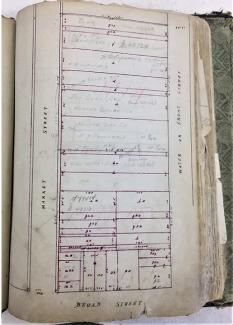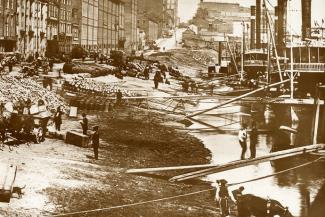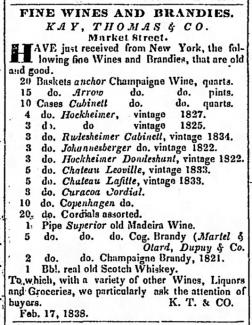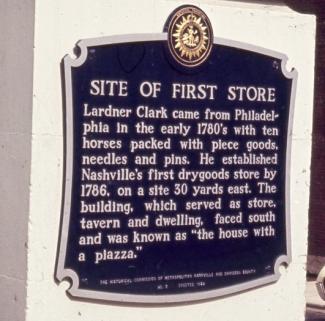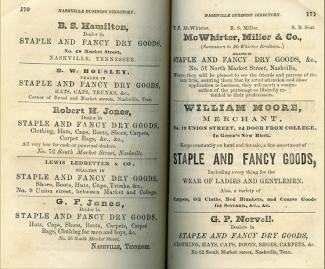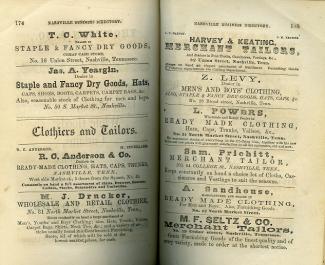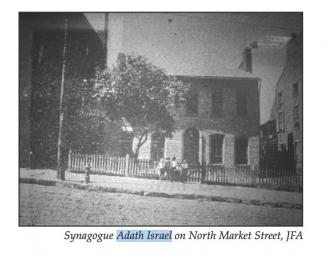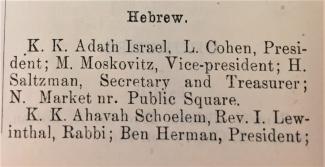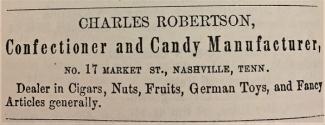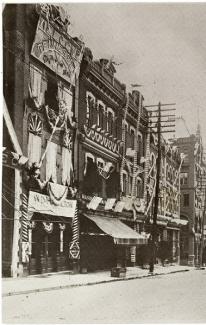
Anyone else feel like you've aged 10 years in the past four weeks? Or just me, that's fine *sigh*.
With what happened at the U.S. Capitol on January 6th, the memory of what took place in Nashville on Christmas Day may have been pushed to the side, so allow me to remind you...
Early Christmas morning, at the end of a somewhat arduous year, a Nashville citizen parked his RV (rigged with some kind of explosives) downtown on 2nd Ave N, near Church Street, and detonated it sometime around 6:30 a.m. It damaged several of the buildings on 2nd Ave, especially those closest to Church Street.
Without digging into the more complicated details of why, here's a link to NPR's story if you're interested, I'm simply going to use that event as a catalyst into reviewing the history of 2nd Ave; after all, this area of town is pretty much the oldest part of the city. And when I started this, like most of my blog posts, I kept finding more information, so this is 2-part series now.
Read on if you'd like to learn a little bit about the street's history, or feel free to simply scroll the slideshow of 2nd Ave throughout the last few centuries, or view the images of the aftermath of the bombing on Christmas Day, provided by Metro Photographer, Michael Bunch...
Early Days as Market Street
The street we know today as "2nd Ave" has seen a lot of time pass over the years, but first with its original name of "Market Street". UPDATE from this actually; I recently read that in Nashville's early, early days (pre-statehood), the street was first "Main Street", pretty generic. But was then named "Market" when the first store was opened in 1786.
The land that would eventually expand to add more businesses and buildings to the street was first purchased in 1784 for about 4 English Pounds, and if I did my Google search and conversions right, that's equal to roughly £600 today, or a little over $800. Still seems like a steal, I think.
The land was dubbed "Market Street" on the original plan of the Town of Nashville, and its location next to the river was advantageous to the warehouses and early wooden buildings built here. In fact, in Lee Ann Thornton's Victorian Memories, she says "the Cumberland River played a large part in the 19th century development of this district."
Various items were brought in on riverboats - food, produce, and other necessities - and received on the Front Street side; the Market Street side would then sell the items. Sounds like logistics handled reasonably.
Market Street was Busy!
I've been going through our Nashville City Directories and indexing the businesses that were formerly located on Market Street/2nd Ave. Unfortunately it wasn't until around 1910 that the directories started providing a reverse index by address first, so most of what I have starts in 1911.
The first business on Market Street, before it was Market Street, was a dry good's store established by Lardner Clark. Here's a few of the other businesses that resided on Market Street prior to 1900 (I'm not including the exact address for all since the numbers don't match today)...
Several dry goods warehouses/stores/shops/etc.
"Staple and Fancy Goods"
- B.S. Hamilton
- R.W. Housley, "Hats, Caps, Trunks, &c."
- Robert H. Jones, "Clothing, Hats, Caps, etc..."
- G.F. Jones, "Hats, Caps, Shoes, etc..."
- McWhirter, Miller & Co., "successors to McWhirter Brothers"
- G.P. Norvell, "clothing, hats, caps, etc..."
Grocers and Butchers (Just a small sampling of what once existed)
- Morris & Stratton, "Wholesale Grocers and Commission Merchants"
- Thos. C. Milsom, "Butcher and Marketer"
Clothing and Tailors, also in 1859
- R.C. Anderson & Co., "Ready-Made Clothing, Hats, Caps, Trunks
- M.J. Drucker, "Wholesale and Retail Clothier"
- L. Powers, "Ready Made Clothing, Hats, Caps, Trunks, Valises, etc."
- A. Sandhouse, "Ready Made Clothing"
Synagogue
- Starting in the 1850's and remained on Market Street up until around 1900.
Candy Shops (something that's continued throughout history)
- James Longinett, "Confectioneries, Fruits, and Choice Wines and Liquors, Cigars, Tobacco, Oysters, and a general supply of every thing used in families"...odd assortment, I bet that place smelled weird.
- Charles Robertson, "Confectioner and Candy Manufacturer"...like the above guy, this guy said ditto and also sold "German toys, and Fancy Articles".
Saloons and Liquor Businesses (before they became "soft drinks" thanks to Prohibition)
- Kay, Thomas & Co., "Fine Wines and Brandies"
- Silver Dollar Saloon - located at the corner of Market and Broad
- George A. Dickel & Co. - located at the corner of Market and Church (yes, this is the same George Dickel Tennessee Whisky business that still exists today).
And one I can't identify, a "Brass Founder" - James Moffett.
As I continue researching for the next post, check back as I find more businesses to include.








